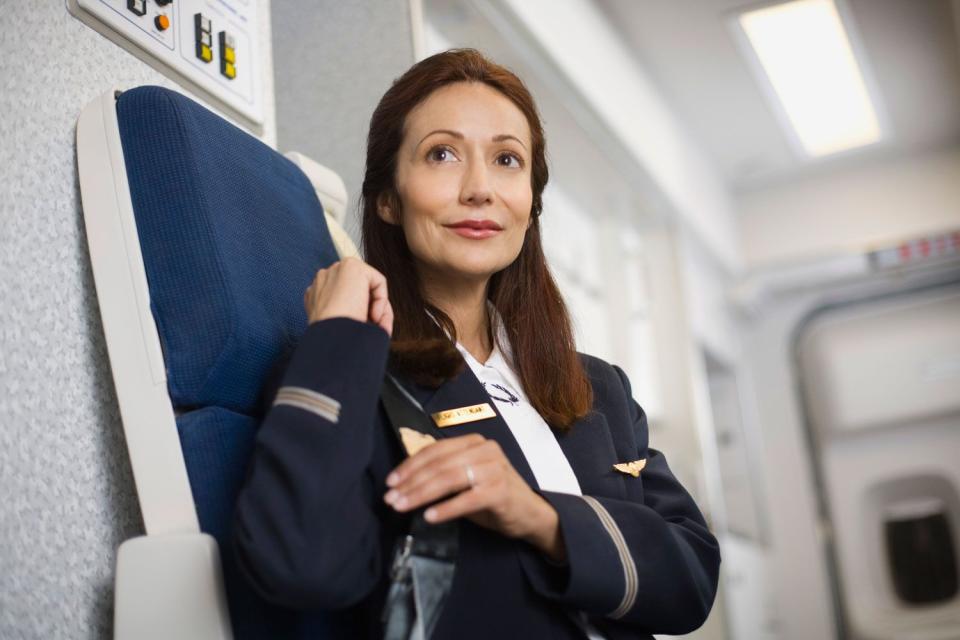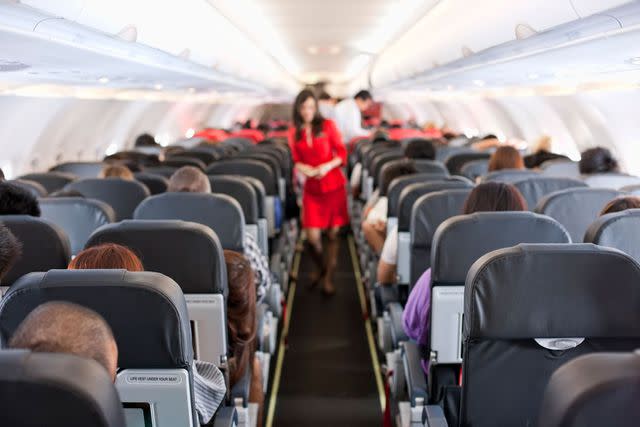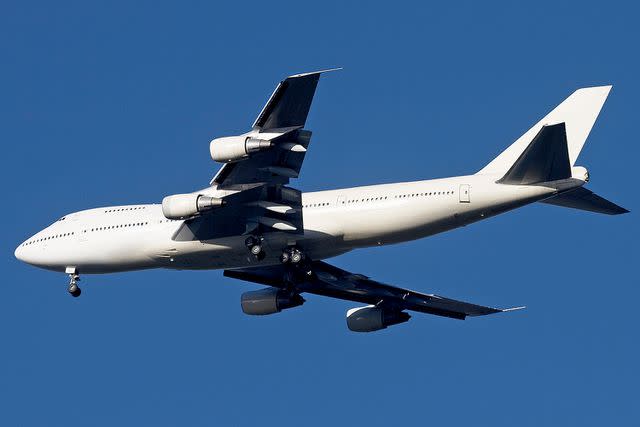Here's Why Flight Attendants Sit on Their Hands During Takeoff and Landing on Airplanes
Flight attendants also take part in what is called a "silent review" during takeoff and landing

Getty
A stock image of a flight attendant.Have you ever wondered why flight attendants sit on their hands during takeoff and landing on airplanes?
According to Henny Lim, a flight attendant for Cebu Pacific in the Philippines, the move is done intentionally to help attendants should it be a bumpy ride.
In a TikTok post, Lim called the act a "bracing position," noting that it "involves fastening [your] seat belt securely, [sitting] upright, [sitting] on [your] hands — palms up, thumbs [tucked] and arms loose — and [placing your] feet flat on the floor."
“The aim is to keep the body in a rigid pose, so that if there was any impact from an unplanned emergency, the body is damaged less," she continued. “This keeps body movement restricted so that there is less chance of injury if there was an impact."
Never miss a story — sign up for PEOPLE's free daily newsletter to stay up-to-date on the best of what PEOPLE has to offer, from celebrity news to compelling human interest stories.

Getty
A stock image of passengers inside the cabin of a commercial airliner during flighRelated: Man Gets Stuck in Delta Airplane Bathroom for 35 Minutes, Is Rescued by Determined Pilot: WATCH
During takeoff and landing, when flight attendants are sitting on their hands, Lim added that they also take part in what she called a "silent review."
This act, she said, "prepares [us] for an emergency situation [during] every takeoff and landing."
“This includes being aware of emergency equipment in the location, door operations, commands given and any visual clues outside [of] the aircraft," Lim added.

Andrew Holt/Getty
Stock image of a plane in-flight.Aircraft manufacturer Airbus recommends all in-flight crew members perform such silent reviews on each flight, according to its safety documents.
"The silent review (or 30-second review) is recommended for cabin crew to mentally recall the key aspects of the emergency evacuation procedure while they are seated at their station before each takeoff and landing, and decreases the risk of distraction," the documents state.
They add: "This silent review will help the cabin crew to focus and be prepared in case an emergency evacuation is required. This technique will also help to minimize the startle effect."

Getty
Stock image of rear view of people flying in an airplane.Speaking with Travel + Leisure, Hilary Clark, director of in-flight services with private jet company Planet 9, reiterated to the outlet that flight attendants sitting on their hands is "a safety position."
"The reason for this safety position is if an emergency were to occur on takeoff or landing, their head, hands, and arms are already in a slight brace position," she continued.
Clark also noted that flight attendants sitting on their hands isn't the only position they might utilize during the start and end of the plane ride.
"Depending on the jump seat position and location, and the aircraft type, they also place their head a certain way for takeoff and landing," she explained to Travel + Leisure. "For example, if their seat is facing away from the pilots, toward the aft of the aircraft, they place their head slightly up and back on the headrest. If their seat is facing the pilots, to the forward of the aircraft, they place their head down and slightly tuck their chin as if they are bowing."
For more People news, make sure to sign up for our newsletter!
Read the original article on People.

 Yahoo Finance
Yahoo Finance 